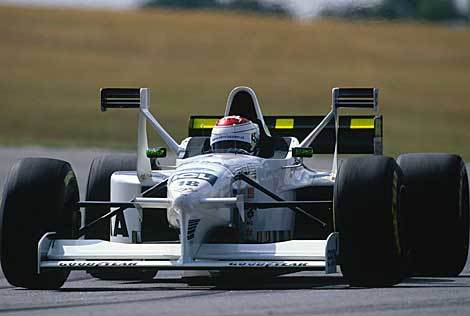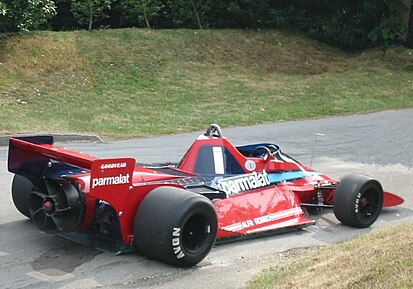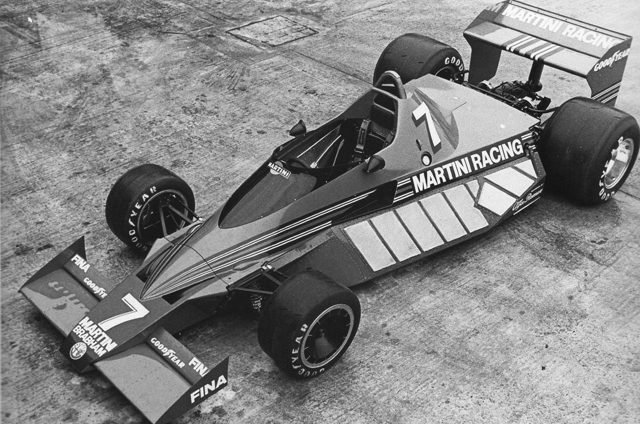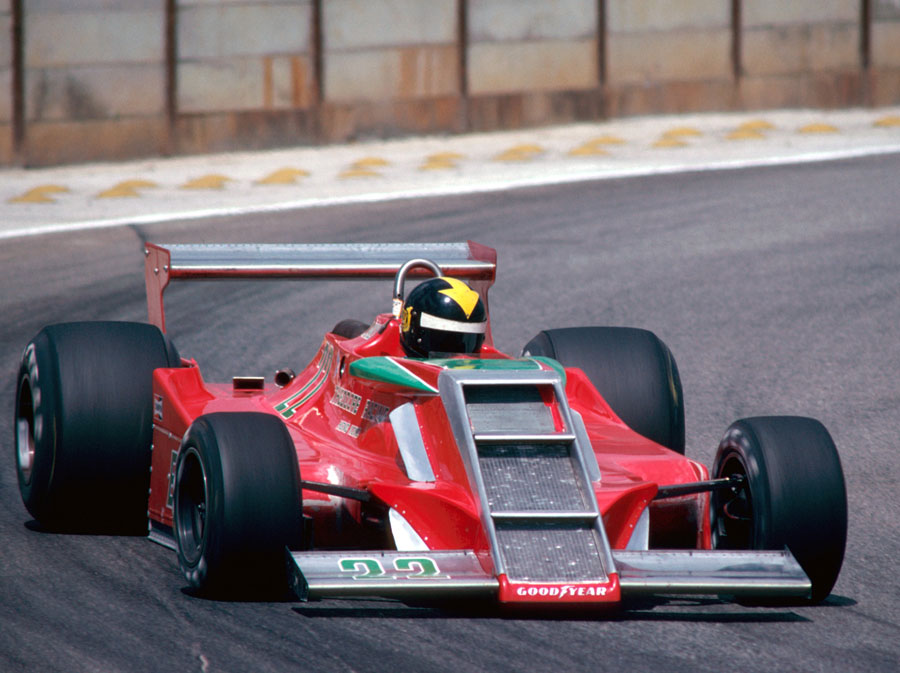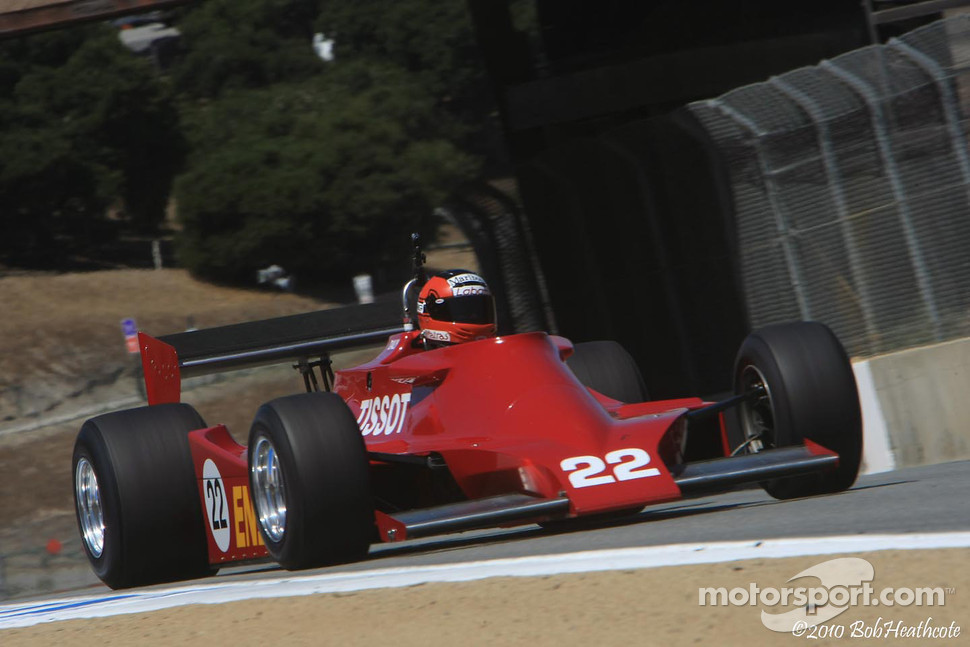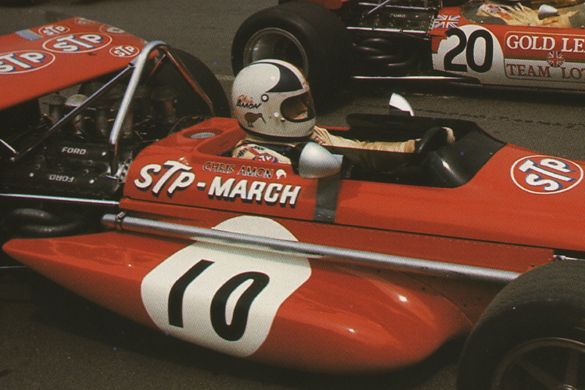Having just read the thread on the potential revival of Brabham and seeing a picture of Lotus 80 I thought it worth starting a thread on some design escapades in F1 which seemed like a good idea at the time but, ultimately, failed miserably. I'll start you off with a couple from my youth.
Arrows A2
I'm not sure how many of you know the history of the Arrows team but they were an off shoot of Shadow Racing.Their first car, the FA1, had to be scrapped and rebuilt as the A1 as the FIA agreed that the design was basically copied from the Shadow car from where most of the team members had come (I think they left with many parts from the Shadow car in their pockets) . This was the time of ground effect and Dave Wass (designer) took a long hard look at what Colin Chapman was up to and thought "I can do that". The A2 was born.
The car was very similar in concept to the Lotus 80. It had no front wing and the rear wing was integral to the body shape. The side skirts ran full length and the suspension was hidden inside devices designed to increase downforce. The engine was even placed at a 4 degree angle to give more space for the huge venturi tunnels which ran under the car.
It created downforce by the bucket load, in fact so much that it would suck the car down on to the track, the low pressure are under the car would then release and the car would spring up (affectionately known as porpoising). This was the days before serious wind tunnels and CFD was a twinkle in the eye of an engineer.
Arrows struggled with the car for 8 races in the 1979 season before locking it away in a shed and building the far more simple A3 design. It did, at least, run in more races than the Lotus 80 and Jochen Mass even dragged it into the points on two occasions.
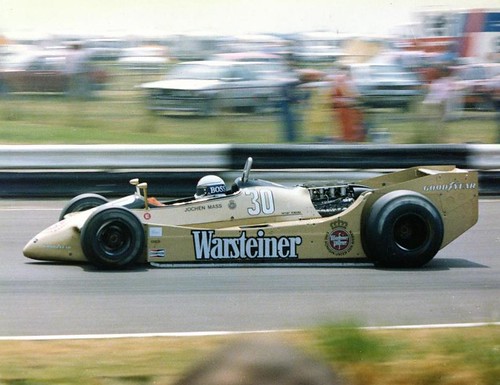
Ligier JS19
In the early 80's Ligier were a force to be reckoned with in F1. The JS11, until they lost the piece of paper with how to set it up, was winning races at the beginning of the 1979 season and it's successor, the JS11/15, was similarly successful during the 1980 season.
In 1981 Geard Ducarouge penned the JS17 and Guy Ligier (a man who was a legend in his own mind) thought it sensible to bolt a Matra V12 engine in to the back of it to replace the Cosworth engine (he was French I suppose and Talbot threw a load of money at the team). This was the end of Ducarouge era as he jumped ship to Alfa Romeo in 1982 and his place as technical director was, bizarrely, taken by Jean Pierre Jabouille.
For those that don't know, Jabouille was the first man to drive a turbo car in the modern era and was with Renault from 1977 to the end of 1980. At the Canadian GP in 1980 he crashed, badly damaging his legs, and although he tried his F1 driving career was over. I presume, pushed on by his brother-in-law Jacques Laffite who was also driving for Ligier, Jabouille (who was a qualified engineer) over saw the design of the JS19 which was also mated to the awful Matra (Talbot) V12 engine.
The problem for Jabouille and the design team was that they hadn't read the regulations properly. The side pods of the car ran all the way from behind the front wheel to past the rear wheels creating an incredibly long looking car. The also fitted sliding skirts along the full length of the side pods but the regulations stated that they had to stop in front of the rear wheels. The car turned up for it's first race having shown pretty well in testing only for the team to have to cut off the last two feet of the skirts which meant all the air running under the car escaped out before reaching the venturi tunnels. Strangely this had an adverse effect on the handling...
Both Eddie Cheever and Jacques Laffited managed to drag the machine on to the podium once each but this was more due to the high attrition rate of the early turbo years rather than a reflection on the quality of the car. For 1983 Ligier went back to the Cosworth engine and produced a car which, visually, was a complete departure from the JS19 as it had virtually no side pods. Jabouille had departed the scene and went off to work for Peugeot developing sports cars.
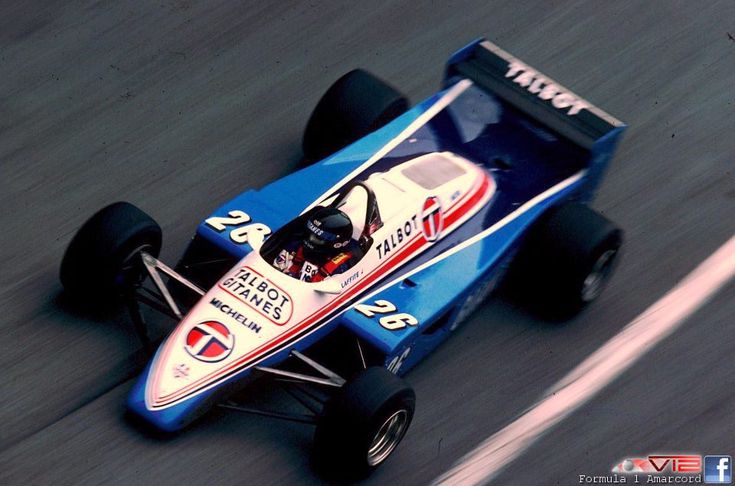
Arrows A2
I'm not sure how many of you know the history of the Arrows team but they were an off shoot of Shadow Racing.Their first car, the FA1, had to be scrapped and rebuilt as the A1 as the FIA agreed that the design was basically copied from the Shadow car from where most of the team members had come (I think they left with many parts from the Shadow car in their pockets) . This was the time of ground effect and Dave Wass (designer) took a long hard look at what Colin Chapman was up to and thought "I can do that". The A2 was born.
The car was very similar in concept to the Lotus 80. It had no front wing and the rear wing was integral to the body shape. The side skirts ran full length and the suspension was hidden inside devices designed to increase downforce. The engine was even placed at a 4 degree angle to give more space for the huge venturi tunnels which ran under the car.
It created downforce by the bucket load, in fact so much that it would suck the car down on to the track, the low pressure are under the car would then release and the car would spring up (affectionately known as porpoising). This was the days before serious wind tunnels and CFD was a twinkle in the eye of an engineer.
Arrows struggled with the car for 8 races in the 1979 season before locking it away in a shed and building the far more simple A3 design. It did, at least, run in more races than the Lotus 80 and Jochen Mass even dragged it into the points on two occasions.

Ligier JS19
In the early 80's Ligier were a force to be reckoned with in F1. The JS11, until they lost the piece of paper with how to set it up, was winning races at the beginning of the 1979 season and it's successor, the JS11/15, was similarly successful during the 1980 season.
In 1981 Geard Ducarouge penned the JS17 and Guy Ligier (a man who was a legend in his own mind) thought it sensible to bolt a Matra V12 engine in to the back of it to replace the Cosworth engine (he was French I suppose and Talbot threw a load of money at the team). This was the end of Ducarouge era as he jumped ship to Alfa Romeo in 1982 and his place as technical director was, bizarrely, taken by Jean Pierre Jabouille.
For those that don't know, Jabouille was the first man to drive a turbo car in the modern era and was with Renault from 1977 to the end of 1980. At the Canadian GP in 1980 he crashed, badly damaging his legs, and although he tried his F1 driving career was over. I presume, pushed on by his brother-in-law Jacques Laffite who was also driving for Ligier, Jabouille (who was a qualified engineer) over saw the design of the JS19 which was also mated to the awful Matra (Talbot) V12 engine.
The problem for Jabouille and the design team was that they hadn't read the regulations properly. The side pods of the car ran all the way from behind the front wheel to past the rear wheels creating an incredibly long looking car. The also fitted sliding skirts along the full length of the side pods but the regulations stated that they had to stop in front of the rear wheels. The car turned up for it's first race having shown pretty well in testing only for the team to have to cut off the last two feet of the skirts which meant all the air running under the car escaped out before reaching the venturi tunnels. Strangely this had an adverse effect on the handling...
Both Eddie Cheever and Jacques Laffited managed to drag the machine on to the podium once each but this was more due to the high attrition rate of the early turbo years rather than a reflection on the quality of the car. For 1983 Ligier went back to the Cosworth engine and produced a car which, visually, was a complete departure from the JS19 as it had virtually no side pods. Jabouille had departed the scene and went off to work for Peugeot developing sports cars.


